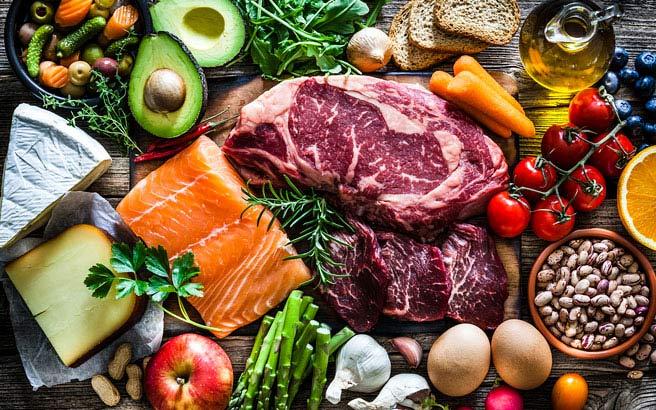Unlocking the secrets of our magnificent bodies lies in the intricate dance between potassium and sodium. With the power to sway our heart health and keep our fluid levels in check, this dynamic duo is the unsung hero of our wellbeing. Diligently overseeing the delicate balance within us, they navigate a labyrinth of ingenious pathways, ensuring our life pumps seamlessly. In this enlightening article, we delve into the wondrous world of potassium and sodium, shedding light on their pivotal roles and illuminating the keys they hold to unlock the realms of heart health and fluid regulation. Brace yourself, dear reader, for a captivating journey that connects the dots between the humble elemental rulers that dictate the symphony of our existence.
Understanding Potassium and Sodium Balance: The Foundation of Heart Health and Fluid Regulation
Potassium and sodium balance are essential for maintaining a healthy heart and regulating fluid levels in the body. These two minerals work together to ensure proper cell function and enable vital bodily processes.
When it comes to heart health, potassium helps to regulate the electrical conduction in the heart and maintain a steady heartbeat. It supports the contraction and relaxation of the heart muscles, helping to pump blood efficiently throughout the body. Sodium, on the other hand, plays a crucial role in maintaining the balance of fluids in the body. It helps to regulate blood pressure and aids in the transmission of nerve impulses.
Having the right balance of potassium and sodium is crucial for heart health and fluid regulation. Imbalances can lead to various health issues, including high blood pressure, kidney problems, and an increased risk of heart disease. To maintain this balance, it is important to consume a diet rich in potassium and low in sodium. Foods such as fruits, vegetables, whole grains, and lean proteins are excellent sources of potassium, while highly processed foods often contain high amounts of sodium. By being mindful of our diet and making healthy choices, we can support the foundation of heart health and fluid regulation.

The Importance of Potassium: Unveiling its Role in Cardiovascular Health
Potassium and sodium play crucial roles in maintaining heart health and fluid balance within our bodies. While sodium is often vilified for its association with high blood pressure, its counterpart, potassium, tends to be overlooked. However, potassium is equally important, if not more so, in promoting cardiovascular health.
One of the key roles of potassium is its ability to counteract the adverse effects of sodium. While sodium raises blood pressure by causing fluid retention, potassium works to lower it by helping the body excrete excess sodium through urine. This delicate balance between the two minerals is crucial for maintaining healthy blood pressure levels.
Furthermore, potassium plays a vital role in regulating heart rhythm. Adequate potassium levels help to maintain the heart’s electrical impulses, promoting proper contraction and relaxation of the cardiac muscles. This smooth and coordinated rhythm is essential for a healthy cardiovascular system.
Another aspect often overlooked is the role of potassium in fluid regulation. Alongside sodium, potassium helps to maintain the body’s water balance, ensuring proper hydration. This balance is especially important for athletes and individuals engaging in physical activities that lead to increased sweating and fluid loss.
To harness the benefits of potassium, it’s essential to consume an adequate amount through our diet. Fortunately, there is a wide range of potassium-rich foods to choose from. Some great options include bananas, oranges, spinach, avocados, and sweet potatoes.
| Food | Potassium Content (per 100g) |
| Bananas | 358mg |
| Oranges | 181mg |
| Spinach | 558mg |
| Avocados | 485mg |
| Sweet Potatoes | 337mg |
Supplementing with potassium may also be an option for individuals who struggle to meet their daily requirements through food alone. However, it’s essential to consult with a healthcare professional before considering any supplements, as excessive potassium intake can have adverse effects, especially for those with certain medical conditions.
In conclusion, maintaining a proper balance between potassium and sodium is crucial for cardiovascular health and fluid regulation. By incorporating potassium-rich foods into our diet and being mindful of our sodium intake, we can support heart health and ensure optimal fluid balance within our bodies.

Maintaining Sodium Balance: Strategies for Optimal Fluid Regulation
Proper fluid regulation is crucial for maintaining optimal health, especially when it comes to heart health. Potassium and sodium balance play a vital role in the body’s fluid regulation system. By understanding how these two minerals interact and implementing strategies to maintain their balance, you can support your heart health and overall well-being.
The Importance of Potassium
Potassium is an essential mineral that helps maintain proper fluid balance in the body. It works in conjunction with sodium to regulate blood pressure, support nerve function, and assist in muscle contractions, including the contraction of the heart. To ensure you are getting enough potassium in your diet, consider incorporating potassium-rich foods such as bananas, avocados, spinach, and sweet potatoes into your meals. Additionally, reducing your intake of processed foods, which are typically high in sodium and low in potassium, can help maintain the balance between these two minerals.
Strategies for Sodium Balance
Sodium is a necessary mineral for many bodily functions, but consuming too much can lead to fluid retention and high blood pressure. To maintain optimal sodium balance, it’s important to be mindful of your salt intake. Avoid adding extra salt to your meals and opt for low-sodium alternatives when available. Reading food labels can also help you identify high-sodium products and make healthier choices. Increasing your consumption of potassium-rich foods can further support sodium balance, as potassium helps counteract the effects of sodium in the body.
Table: High-Potassium Foods
| Food | Potassium Content (mg) |
|---|---|
| Bananas | 400 |
| Spinach | 540 |
| Avocados | 950 |
| Sweet Potatoes | 400 |
Key Takeaways:
- Proper fluid regulation is crucial for heart health and overall well-being.
- Potassium works with sodium to regulate blood pressure, nerve function, and muscle contractions.
- Incorporate potassium-rich foods into your diet to support potassium-sodium balance.
- Reduce your intake of processed foods, which are typically high in sodium and low in potassium.
- Be mindful of your salt intake and opt for low-sodium alternatives.
- Reading food labels can help you make healthier choices and avoid high-sodium products.

Dietary Tips for Achieving the Right Potassium and Sodium Intake
Maintaining a proper balance of potassium and sodium in your diet is crucial for heart health and fluid regulation. Both of these minerals play significant roles in numerous bodily functions, including muscle contractions, nerve impulses, and maintaining the balance of fluids. Here are some dietary tips to help you achieve the right potassium and sodium intake:
-
Embrace fresh fruits and vegetables: Including a variety of fruits and vegetables in your meals can boost your potassium intake. Bananas, avocados, oranges, spinach, and sweet potatoes are excellent sources of potassium. Don’t forget to incorporate these nutrient-packed foods into your daily diet.
-
Opt for whole grains: Whole grains such as brown rice, quinoa, and whole wheat bread can provide you with essential minerals, including potassium. They are also rich in fiber, promoting a healthy digestive system and supporting overall heart health.
-
Read food labels: Many processed foods are loaded with sodium, which can be detrimental to your health in excess. Be conscious of the sodium content in packaged foods by reading labels carefully. Try to choose low-sodium or no-added-salt options whenever possible.
-
Cook at home: Preparing meals at home allows you to have more control over the amount of sodium in your food. By using fresh ingredients and reducing the use of added salt, you can significantly decrease your sodium intake and promote better heart health.
By following these dietary tips, you can improve your potassium and sodium balance, supporting your heart health and fluid regulation. Remember that balance is key, and achieving the right intake of these minerals is essential for overall well-being. So, make smarter food choices and take a step towards a healthier lifestyle today.
Concluding Remarks
As we conclude this deep dive into the fascinating world of potassium and sodium balance, we embark on a journey to truly understand the keys to heart health and fluid regulation. The intricate dance performed by these essential minerals within our bodies is nothing short of mesmerizing, and their influence on our overall well-being cannot be understated.
From the rhythmic beat of our hearts to the delicate equilibrium of fluid levels, potassium and sodium shield us from the chaos that would otherwise ensue. As if choreographed by a maestro, this delicate interplay maintains the stability required for our bodies to function optimally.
Throughout history, experts have hailed the significance of this balance, recognizing its pivotal role in maintaining cardiac health and fluid equilibrium. The Greeks reveled in the notion that a harmonious blend of potassium and sodium within our bodies could propel us to a state of utter vitality. Today, their wisdom continues to hold true as modern science unlocks the secrets that lie within.
In this journey, we have discovered the staggering consequences of an imbalance in these minerals. A surfeit of sodium, often found in processed and fast foods, can wreak havoc on our delicate internal workings, putting immense strain on our hearts and disturbing the fragile harmony of fluid regulation. Conversely, a paucity of potassium, too often overlooked in our diets, can tip the delicate scales, leading to dire consequences for both our cardiovascular system and overall health.
But fear not, for knowledge is power! Armed with a newfound understanding, we can now make informed choices, forging a path towards a balanced existence. By embracing whole, unprocessed foods abundant in potassium and potassium-rich supplements, we can cultivate a state of equilibrium that will guide us towards a life of robust heart health and harmonious fluid regulation.
So, dear readers, let us embark on this journey, hand in hand with our trusty companions, potassium and sodium. Let us embrace their significance and nurture the delicate balance they provide. With their guidance, we can unlock the secrets to a healthier heart and a life flowing with vitality.


